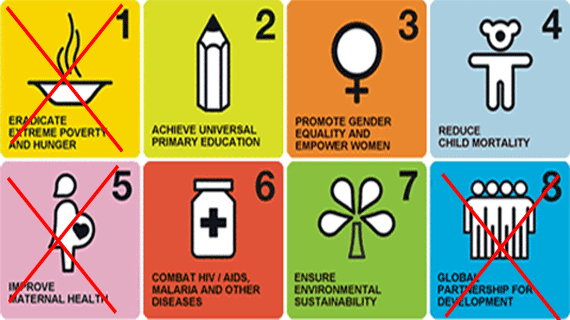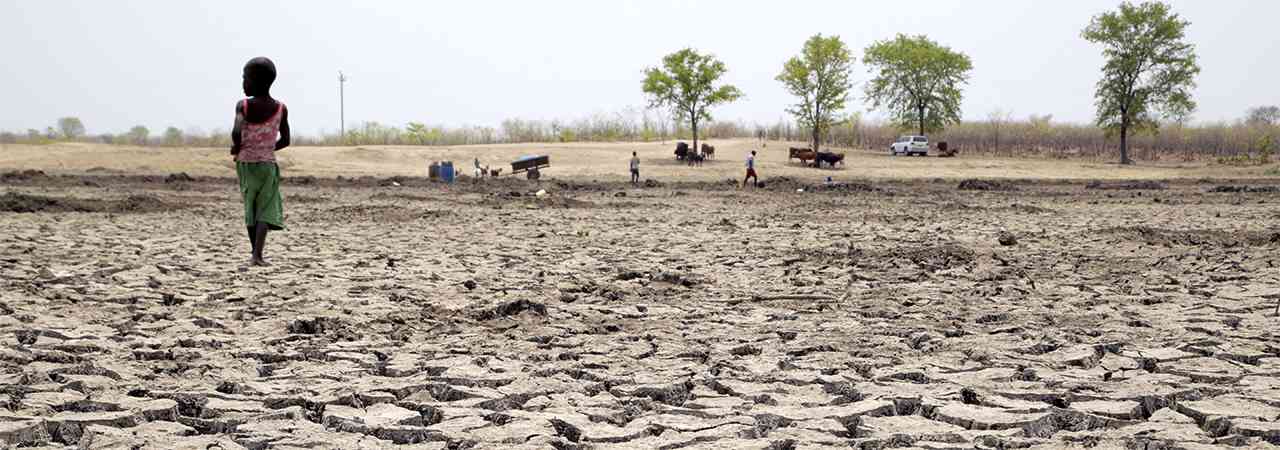
ZIMBABWE is likely to miss three of the eight Millennium Development Goals (MDGs) by 2015, a report by the United Nations and the government has revealed.
NDUDUZO TSHUMA STAFF REPORTER
According to the report titled: Zimbabwe 2012 Millennium Development Goals Progress, the country was unlikely to achieve goal number one aimed at eradicating extreme poverty and hunger.
The country is also likely to miss goal number five that focuses on the improvement of maternal health and goal eight that deals with developing a global partnership for development.
However, the report says the country is likely to achieve goal number two which seeks to achieve universal primary education.
Parts of goal three that promote gender equality and empowerment of women are set to be achieved as well as goal seven aimed at ensuring environmental sustainability.
According to the report, Zimbabwe also has the potential to achieve goal four that deals with the reduction of child mortality and goal six to combat HIV and Aids, malaria and other diseases.
On the first goal of eradicating extreme poverty and hunger, the report said although Zimbabwe experienced an economic growth rate with gross domestic product (GDP) rising from 5,7% from 2006 to 9,3% in 2011, the trend had not translated to growth in productive employment and poverty reduction.
- Chamisa under fire over US$120K donation
- Mavhunga puts DeMbare into Chibuku quarterfinals
- Pension funds bet on Cabora Bassa oilfields
- Councils defy govt fire tender directive
Keep Reading
The report said 72,3% of all Zimbabweans were considered poor in 2011 while 62,2% of households were also deemed poor.
“Poverty is more prevalent in rural areas compared to urban areas with about 76% of the rural households considered poor compared to 38,2% of urban households.Individual poverty prevalence is 84,3% in rural areas compared to 46,5% in urban areas while extreme poverty is 30,3% in rural areas compared to only 5,6% in urban areas,” the report said.
The report added that 94% of salaried workers in 2011 received an income equal or below the total consumption poverty line for an average family of five while three out of four employed persons in the country were classified under “vulnerable employment”.
The report noted that despite fluctuations in the net enrolment ratios, primary enrolment remained very high. It said in 2011, the ratios declined to 87% from a high of 91% in 2009.
“Very little gender or geographic disparity is found at primary school level. Completion rates have not been high as NER, although they have risen from 68% in 2005 to 82% in 2009.Students in urban areas and female students have been shown to demonstrate higher completion rates,” the report noted.
The report further said the country had achieved gender parity at primary and secondary school levels with respect to enrolment, attendance and completion rates.
“There is also gender parity in literacy rates. However, enrolment and gender disparities still exist at tertiary level, although this has gradually improved, especially considering that cohorts with gender parity in high schools are proceeding to tertiary level,” the report said.
It noted that there was need for greater effort to increase the participation of women in decision-making in all sectors.
“Although the legislative framework for the empowerment of women has led to some progress, more affirmative action to promote gender equality is required,” the report said.
The report also said infant mortality rates were improving slowly with the under-five mortality rate declining from 102 deaths per 1 000 live births in 1999 to 84 per 1 000 in 2010-2011.
It was revealed that the infant mortality rate declined from 65 deaths per 1 000 live births in 2010-2011 to 57 deaths per 1 000 live births in 2010-2011.
“Even so, this decline is not fast enough to achieve the MDG4 target.”
The report said the present maternal mortality rate of 960 deaths per 100 000 live births was significantly higher than the rate of 612 deaths per 100 000 live births recorded in for 2005-2006.
The report noted a decrease in the proportion of births attended by skilled health personnel, especially in rural areas, while unaffordable maternity fees remained one of the major challenges.
The report revealed that Zimbabwe was one of the 34 African countries that has stabilised the spread of HIV and Aids with a 49% reduction in new cases, especially among young people. It revealed that the country was making progress in the debt overhang and although relations with the international community had largely stabilised, these remain crucial to engaging more effectively with donor countries in order to encourage investment.










